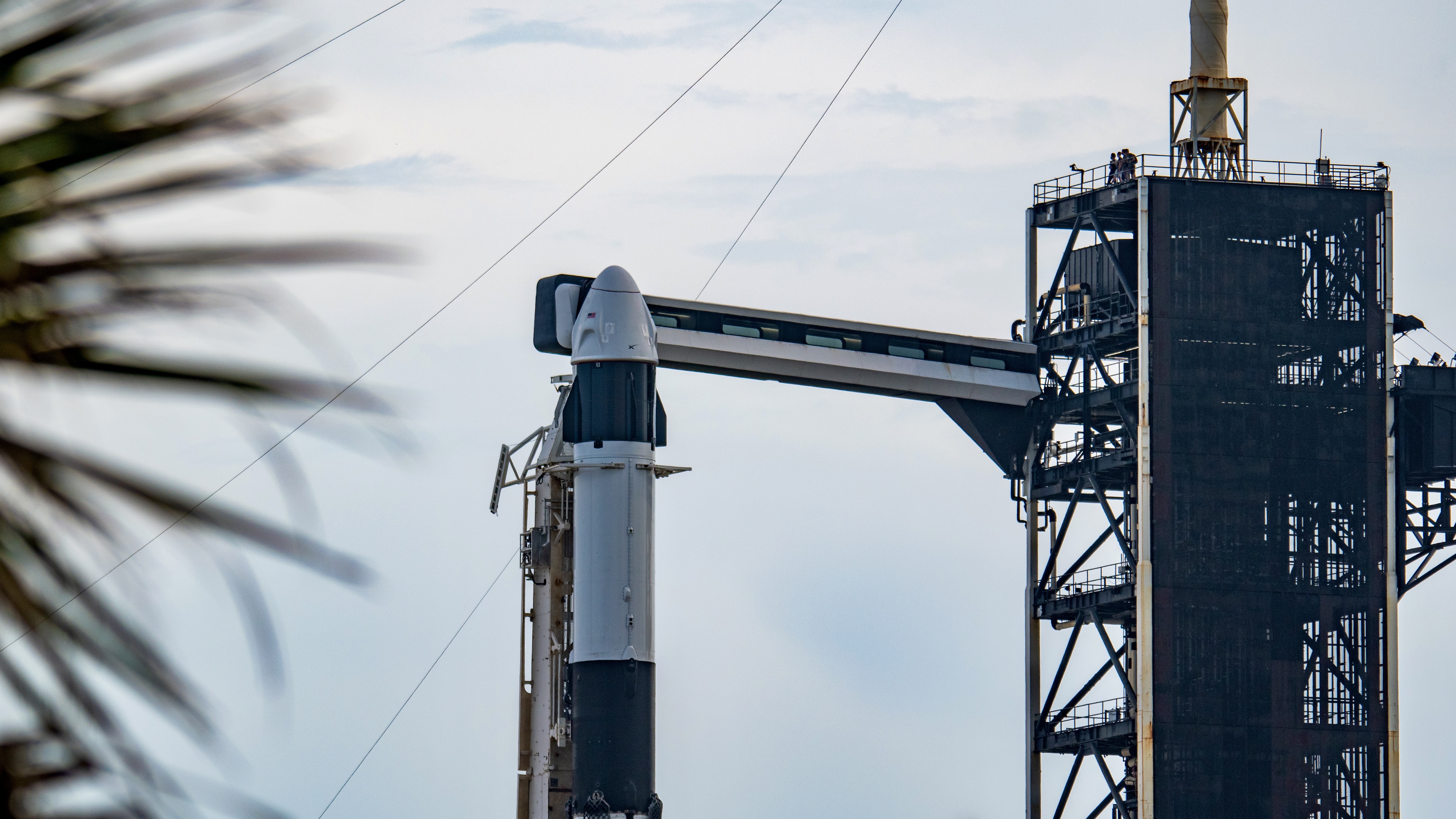Cosmic rays may complicate the quest to find life on Mars
"My dream would be to see a mission going to a Martian cave or to a Martian lava tube, because one of those caves could be completely pristine from radiation,"

On Mars, some of the most likely places to look for traces of ancient life may also be the least likely to preserve those traces.
This is the result of a recent study that simulated exposing important building blocks of life called "lipids" to cosmic rays pummeling the surface of Mars. And, in short, the exposed material appeared to break down very quickly under the bombardment of radiation from space — and even faster when there was salt mixed in with the sediment, which is the case in many of the places we consider the most likely ancient habitats on Mars.
"We go for salt-rich environments, but they could be one of the most damaging under radiation," Georgetown University astrobiologist Anais Roussel told Space.com.
Erasing evidence of past life
"This is a big limitation we have in astrobiology, and the more we know, the better," says Roussel.
Roussel and her colleagues' work suggests that's a good reason to worry — especially in places on Mars that most likely stayed habitable as the planet became cooler and drier around 4 billion years ago.
In particular, the researchers focused on hopanes and steranes, the fossil forms of chemicals called hopanols and sterols. Hopanols are important parts of the cell membranes of bacteria, while sterols are part of the cell membranes of eukaryotes (organisms whose cells have nuclei; humans are an example)). Here on Earth, these two lipids represent some of the most resilient chemical traces of life; under the right conditions, they can survive in rocks or soil for billions of years. Plus, living cells are the only known source of these chemicals, so if they turn up, it's most likely clear evidence of life with chemistry similar to life on Earth.
Here on Earth, however, most rocks and soil aren't getting constantly pummeled by cosmic rays, thanks to the protection of our atmosphere and magnetic field. That's not the case on Mars. It lost those shields around 4 billion years ago. As such, when Roussel and her colleagues bombarded her samples of lipids with gamma rays to simulate the cosmic ray exposure on Mars, about half the lipids in her sample decayed into unrecognizable jumbles of smaller molecules, within the equivalent of about 3 million years of exposure on the Martian surface.
Get the Space.com Newsletter
Breaking space news, the latest updates on rocket launches, skywatching events and more!
For context, some of the rock outcroppings at Gale Crater, home of the Curiosity Rover, have been exposed to cosmic rays on the Martian surface for about 80 million years.
"Three million years is a really, really short amount of time to get rid of such good diagnostic biosignatures," says Roussel.
The team’s lipid samples degraded about twice as fast as another important chemical that previous studies tested in similar experiments: amino acids, the chemicals that make up proteins, which are the literal building blocks of life. Roussel suggests that could be because lipids are much larger molecules, and their shapes are very different from amino acids, which means they’ve got more surface area available to be hit by incoming radiation.
And, again, radiation exposure isn't much of an issue on Earth — but on Mars, it could be a big one.
"We need to really keep all of these parameters in mind when we go to Mars, and try to avoid defining only one perfect place, one perfect biosignature, or one perfect target," says Roussel.
And then there's the salt problem
Most of the places astrobiologists consider the most likely to hold evidence of ancient Martian life are simply very salty.
As Mars's atmosphere grew thinner and its surface grew colder, fresh water either froze in the cold or boiled away under the low air pressure (depending on location). Briny streams and lakes would have been some of the last bodies of liquid to remain because salt water needs a colder temperature to freeze; salt also makes water a little harder to boil, so as the air pressure dropped, salt content should have kept the water from vanishing in a puff of vapor.
When it comes to preserving the chemical traces of whatever once lived in those briny ponds, though, salt does more harm than good.
"We don't know right now what specifically in the salt structure itself can create something that would further degrade organics," says Roussel. That's a question scientists are still working to answer. Radiation might cause chloride or sodium in the salts to form chemicals that react with organic molecules (like lipids), breaking them down into smaller pieces. On the other hand, if there's even a microscopic bit of leftover water still clinging to the salts, it could produce chemicals called oxidants, which also break down organic molecules very quickly.
Hope springs eternal, even if the springs are briny
The findings sound discouraging, but Roussel says they've actually made her more optimistic than ever about the prospect of life on Mars.
"Maybe if we didn't find anything conclusive so far, it doesn't mean that there was never life on Mars, but that we're just looking at the wrong place or that we need to go deeper."
In 2029, the European Space Agency's Rosalind Franklin Rover will have a chance to do exactly that. NASA's Curiosity and Perseverance rovers can only drill about 5 centimeters (about 2 inches) into the ground — that's not deep enough to reach rocks or sediment protected from cosmic rays. But Rosalind Franklin's drill will reach about 2 meters (78 inches), which is deep enough to avoid most, but not all, radiation exposure.
"My dream would be to see a mission going to a Martian cave or to a Martian lava tube, because one of those caves could be completely pristine from radiation," says Roussel. "That would be extremely challenging from an engineering point of view, but I think if you could go, this raises hope."
The study was published on Nov. 13 in the journal Astrobiology.
Join our Space Forums to keep talking space on the latest missions, night sky and more! And if you have a news tip, correction or comment, let us know at: community@space.com.

Kiona Smith is a science writer based in the Midwest, where they write about space and archaeology. They've written for Inverse, Ars Technica, Forbes and authored the book, Peeing and Pooping in Space: A 100% Factual Illustrated History. They attended Texas A&M University and have a degree in anthropology.
-
MikeMc The only way we will find evidence of life on Mars is to go there. There is a massive difference between sending robots to Mars vs sending humans to Mars.Reply
